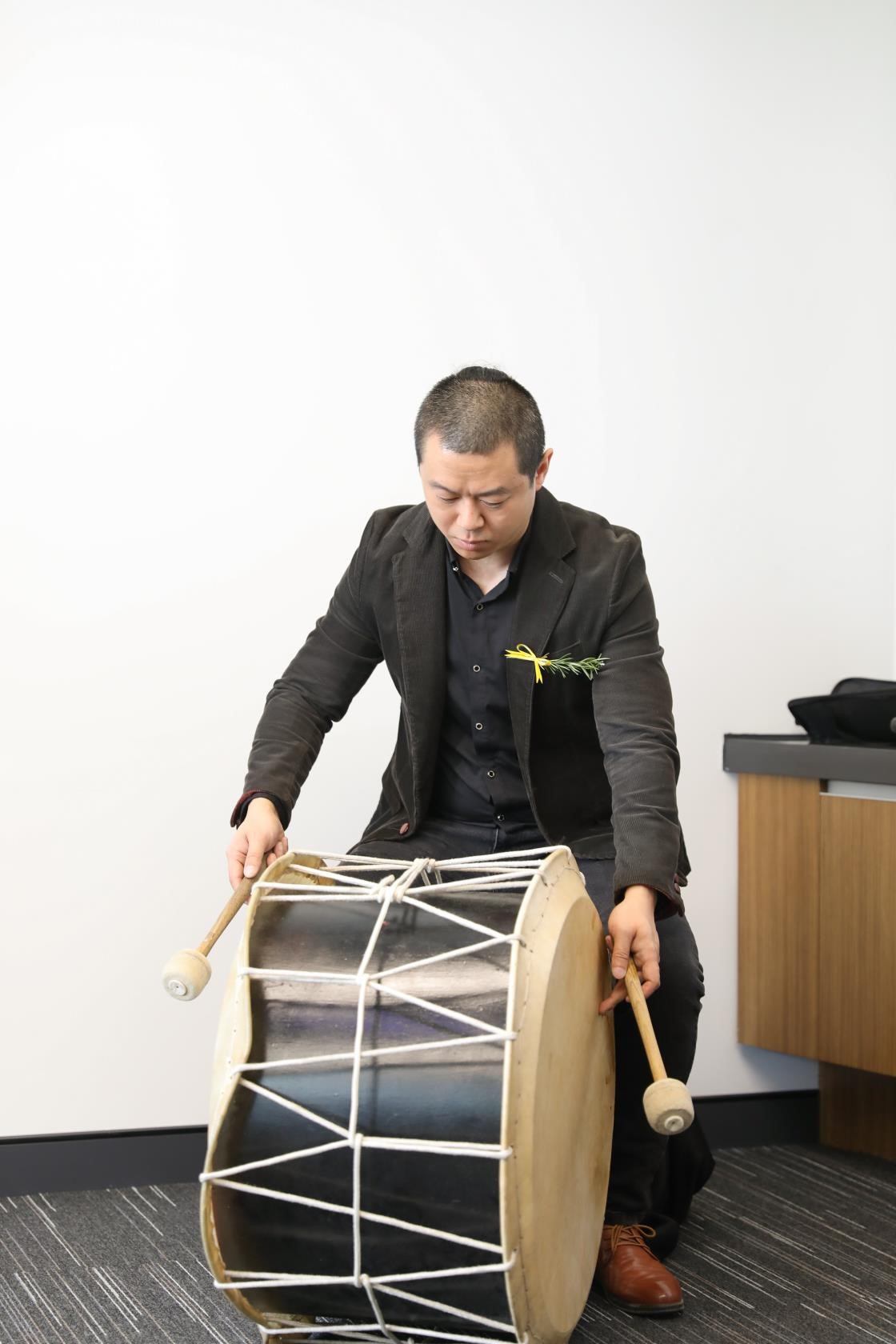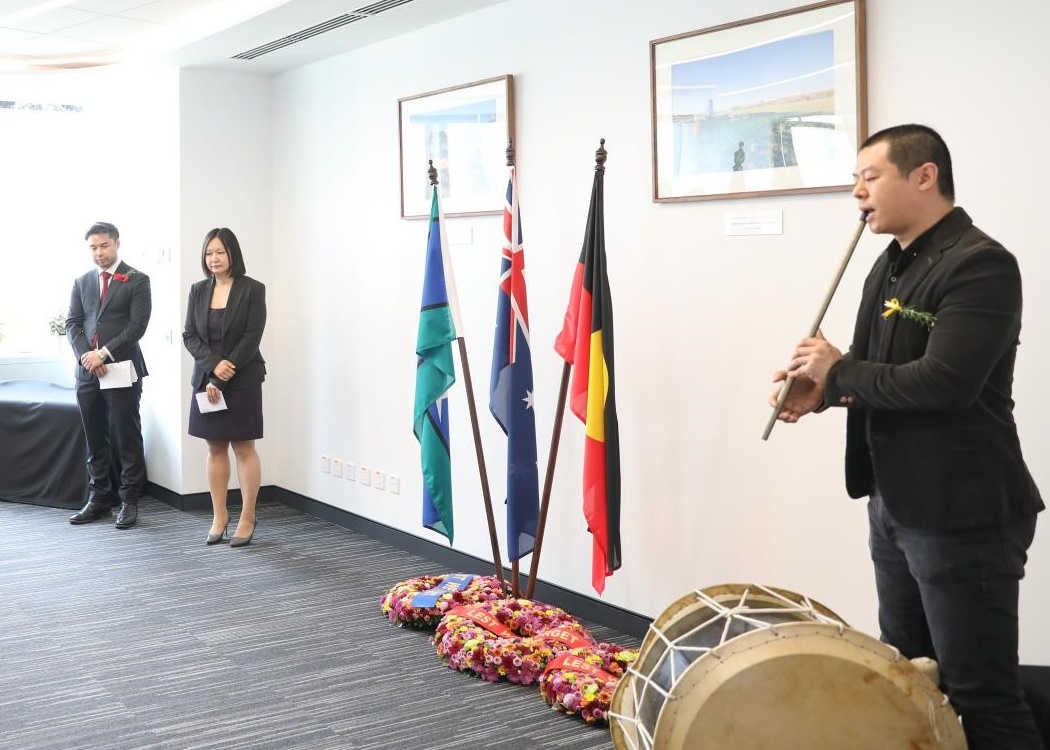
 Every year, on the 25th of April, we pay tribute to thousands of men and women of Australia and New Zealand who have served in all wars, conflicts and peacekeeping operations. This year's ANZAC Day commemoration took place within the the Australian Consulate General in Shenyang.
Every year, on the 25th of April, we pay tribute to thousands of men and women of Australia and New Zealand who have served in all wars, conflicts and peacekeeping operations. This year's ANZAC Day commemoration took place within the the Australian Consulate General in Shenyang.
A typical Anzac Day commemoration service features a recitation of 'The Ode' - an excerpt from Laurence Binyon's poem For the Fallen, a one minute silence, and laying of wreaths. Traditional music pieces are also important in honouring the service and sacrifice of our veterans and serving personnel.
In Shenyang, former capital of Manchuria, traditional instruments are used for sincere occasions. For this year's ANZAC ceremony, the Consulate General invited a local musician to perform traditional ANZAC songs with Manchu Instruments.
The event began with a Manchu drum (Acabure Tungken, Manchurian) solo named ‘Return’, an original composition commissioned for the ceremony. The piece combined the rhythm ‘Return to Base’, a traditional Manchu military song, with ‘The Last Post’, normally played on a bugle. According to the musician, 'the melodious and powerful drum rhythms sound as a beating heart, while the melody fades out to indicate the end of life, and soldiers returning home'.



'The Last Post' is a bugle call which signals the end of the day. It became incorporated into funeral and memorial services for veterans as a final farewell. It symbolises that the duty of the dead is over and that they can rest in peace. After the traditional minute's silence, the Rouse/Reveille is sounded, signifying that after a period of mourning, life and duty continue. At this year's ceremony, the Last Post/Rouse were played on the Coron (woodwind, shaped like a flute, also known as Hu Jia) and the Bileri (a middle and ancient wooden orchestral instrument from ancient China).
Australians and New Zealanders across the world come together on ANZAC DAY not only for reflecting on wars and conflicts of the past, but also to cherish the hard-won peaceful times of the present.
